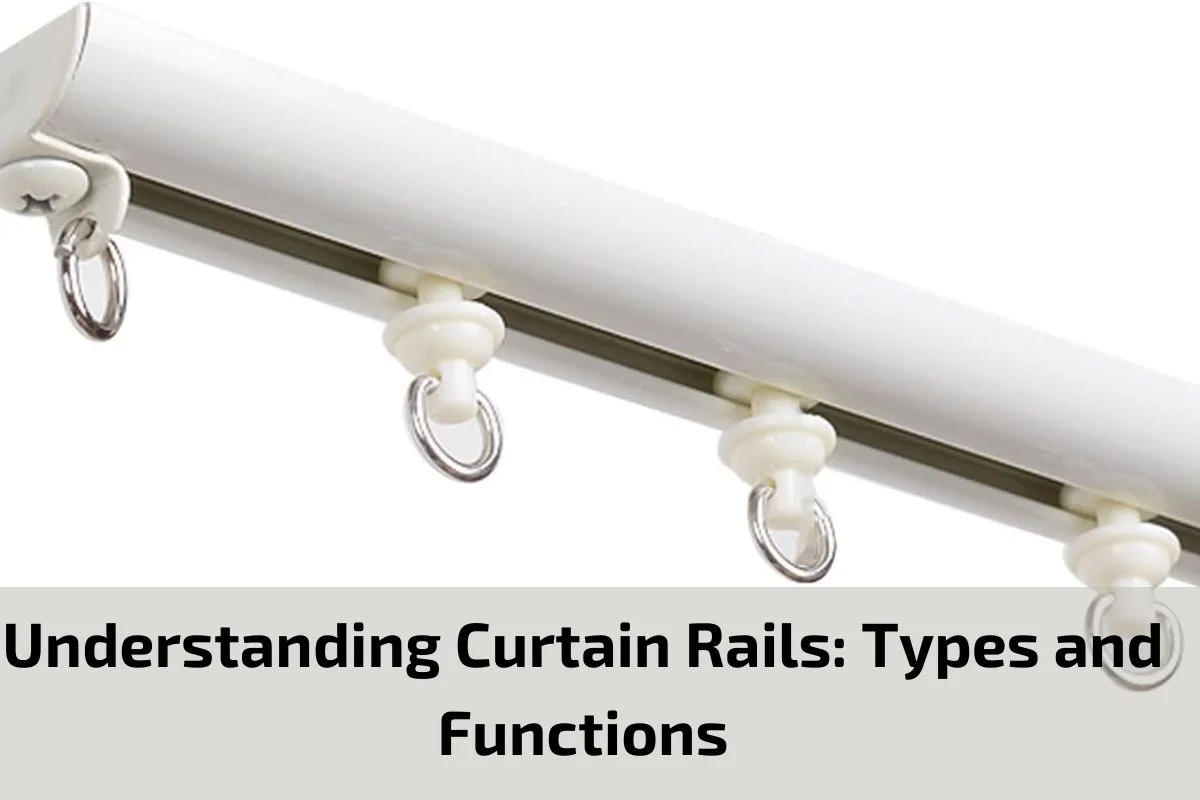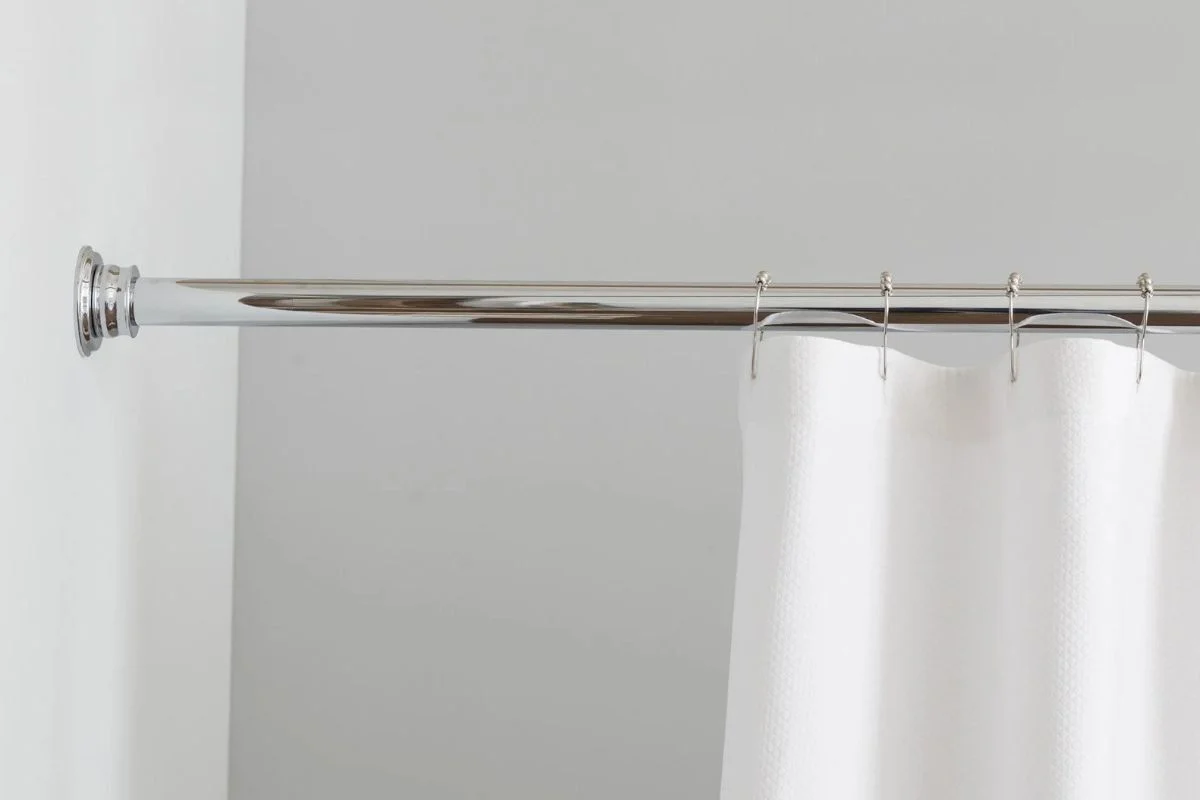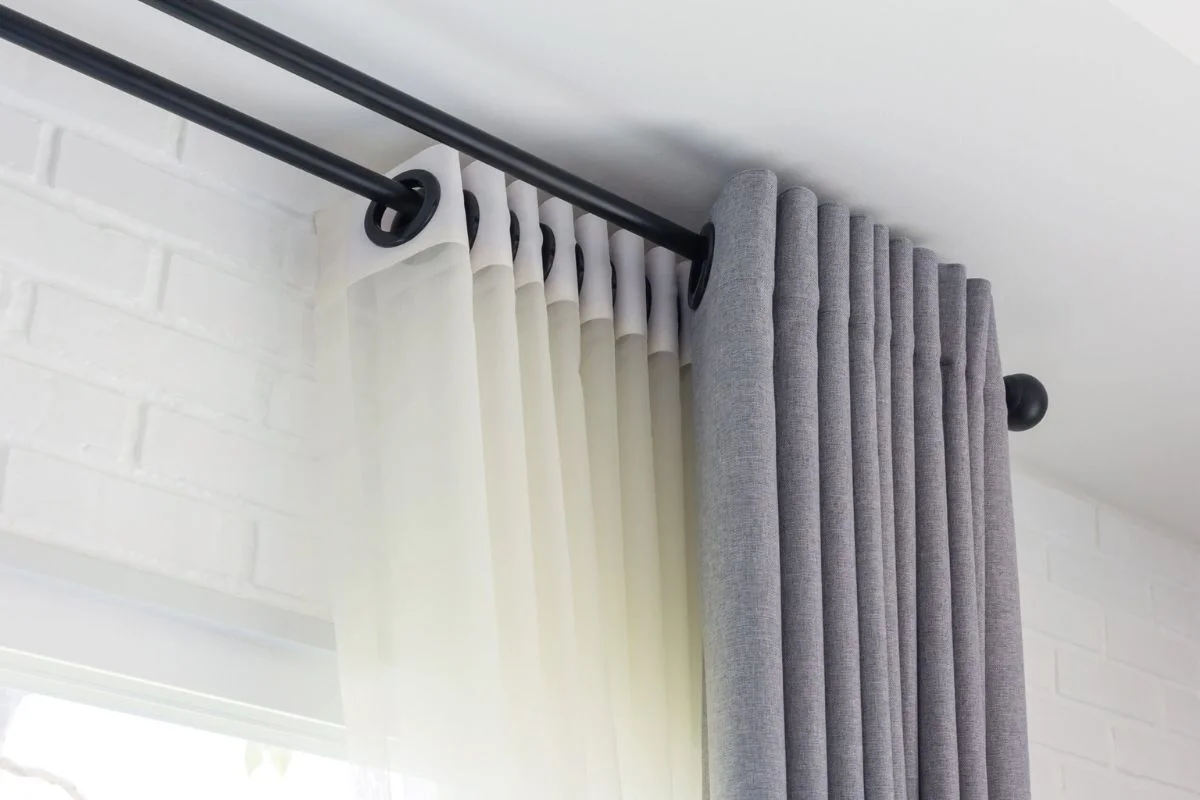
Curtain rails serve as the backbone of any window treatment, providing both functionality and aesthetic appeal to a room’s decor. Understanding the various types of curtain rails available and their functions is essential for selecting the right option to suit your needs and style preferences. From traditional to modern designs, curtain rails come in a multitude of styles, materials, and configurations, each offering unique features and benefits. In this guide, we’ll delve into the world of curtain rails, exploring the different types and their functions, so you can make an informed decision when it comes to enhancing your windows with the perfect rail solution. Whether you’re looking for simplicity, versatility, or innovative design, discovering the right curtain rail for your space can elevate the overall look and feel of your home while providing practical solutions for your window treatments.
Brief Overview of the Importance of Curtain Rails in Window Treatments
Curtain rails play a pivotal role in the functionality and aesthetics of window treatments. Essentially serving as the backbone of any curtain or drapery setup, curtain rails provide the infrastructure necessary for hanging and operating window coverings with ease and efficiency.
Support and Stability: Curtain rails serve as the primary support system for curtains, ensuring they hang securely and evenly across the window. Without sturdy and well-installed curtain rails, curtains may sag or become uneven, detracting from the overall appearance of the room.
Smooth Operation: Curtain rails facilitate the smooth opening and closing of curtains, allowing for effortless adjustment of light levels and privacy. Whether manually operated or motorized, the quality and design of curtain rails directly impact the ease of use and functionality of window treatments.
Versatility: Curtain rails come in a variety of types and configurations to accommodate different window sizes, shapes, and styles of curtains. From traditional curtain rods to modern motorized rails, there are options available to suit every preference and requirement.
Enhanced Aesthetics: Beyond their practical function, curtain rails contribute to the overall aesthetic appeal of window treatments and the room as a whole. Stylish and well-chosen curtain rails can complement the decor scheme, adding a touch of elegance and sophistication to any space.
Customization Possibilities: Curtain rails offer opportunities for customization and creativity in window treatments. With various mounting options, finishes, and accessories available, homeowners can tailor their curtain rails to suit their individual preferences and design vision.
Definition and Purpose of Curtain Rails
Curtain rails, also known as curtain rods or tracks, are horizontal fixtures typically mounted above windows to support and facilitate the hanging of curtains or draperies. They serve as the foundational structure for window treatments, providing stability, functionality, and aesthetic appeal to the overall decor of a room.
Definition: Curtain rails are elongated hardware components made from various materials such as metal, wood, or plastic. They are designed to span the width of a window or opening, allowing curtains to be hung and moved along their length.
Purpose:
Support: The primary purpose of curtain rails is to provide support for curtains or draperies, ensuring they hang evenly and securely across the window. This support prevents sagging and helps maintain the desired appearance of the window treatment.
Functionality: Curtain rails facilitate the smooth opening and closing of curtains, allowing for easy adjustment of light levels and privacy in a room. Depending on the type of curtain rail, curtains can be operated manually by hand or through automated mechanisms.
Aesthetic Enhancement: Curtain rails contribute to the overall aesthetic appeal of window treatments and the room decor. They come in a variety of styles, finishes, and designs, allowing homeowners to choose options that complement their interior design theme and personal preferences.
Versatility: Curtain rails offer versatility in terms of installation options and compatibility with different types of curtains and window treatments. They can be mounted on walls, ceilings, or within window recesses, making them suitable for various window configurations and sizes.
Customization: Curtain rails provide opportunities for customization and creativity in window treatments. Accessories such as finials, brackets, and rings can be added to curtain rails to enhance their appearance and functionality, allowing homeowners to personalize their window treatments to match their unique style.
Types of Curtain Rails
Curtain rails come in various types, each offering unique features and advantages to suit different window configurations and preferences. Understanding the differences between these types can help homeowners choose the most suitable option for their needs. Here are some common types of curtain rails:
Traditional Curtain Rods:
Description: Traditional curtain rods consist of a straight, horizontal rod typically made of metal or wood. They often feature decorative finials on each end for added aesthetic appeal.
Ideal Window Treatments: Traditional curtain rods are suitable for lightweight to medium-weight curtains and draperies. They work well with rod-pocket, tab-top, or grommet-style curtains.
Pros and Cons:
- Pros: Easy to install, versatile, available in various styles and finishes.
- Cons: May require additional support brackets for longer lengths, limited weight capacity compared to other types.
Curtain Tracks:
Description: Curtain tracks are ceiling or wall-mounted systems consisting of a track or rail with sliding carriers that hold the curtains. They offer a sleek and minimalist look, with the track often hidden from view behind the curtains.
Ideal Window Treatments: Curtain tracks are suitable for heavy curtains and draperies, as well as for large or bay windows where traditional rods may not be practical.
Pros and Cons:
- Pros: Smooth and quiet operation, suitable for heavy curtains, can be bent to fit curved or angled windows.
- Cons: Requires precise measurements and installation, limited decorative options compared to traditional rods.
Traverse Curtain Rods:
Description: Traverse curtain rods feature a rod with carriers or slides attached, allowing curtains to be opened and closed with a pull cord or wand mechanism. They are often used for curtains that need to be frequently opened and closed, such as in formal living rooms or bedrooms.
Ideal Window Treatments: Traverse curtain rods are suitable for medium to heavy curtains, particularly those with pinch pleats or rod-pocket styles.
Pros and Cons:
- Pros: Convenient for daily use, provides smooth and uniform curtain movement, suitable for layered window treatments.
- Cons: More complex installation process, limited decorative options compared to traditional rods.
Motorized Curtain Rails:
Description: Motorized curtain rails feature an electric motor that allows curtains to be opened and closed remotely via a wall switch, remote control, or smartphone app. They offer convenience and automation for controlling light and privacy.
Ideal Window Treatments: Motorized curtain rails are suitable for any type of curtain or drapery, making them ideal for smart home setups or hard-to-reach windows.
Pros and Cons:
- Pros: Convenient and user-friendly, offers precise control of curtain movement, enhances home security by allowing curtains to be operated remotely.
- Cons: Higher initial cost compared to manual curtain rails, requires access to power source for operation.
Benefits of Curtain Rail
The benefits of curtain rails extend beyond mere support for window treatments; they play a crucial role in enhancing the functionality, aesthetics, and overall comfort of a living space. Here are some key benefits of curtain rails:
Enhanced Functionality: Curtain rails facilitate smooth and effortless operation of curtains, allowing for easy adjustment of light levels and privacy according to preference. Whether manually operated or motorized, curtain rails provide convenience and ease of use.
Versatility: Curtain rails come in various types and configurations to accommodate different window sizes, shapes, and styles of curtains. From traditional curtain rods to modern motorized rails, there are options available to suit every preference and requirement.
Support and Stability: Properly installed curtain rails provide essential support and stability for curtains or draperies, ensuring they hang evenly and securely across the window. This support prevents sagging and maintains the desired appearance of the window treatment.
Aesthetic Enhancement: Curtain rails contribute to the overall aesthetic appeal of window treatments and the room decor. They come in a variety of styles, finishes, and designs, allowing homeowners to choose options that complement their interior design theme and personal preferences.
Customization Possibilities: Curtain rails offer opportunities for customization and creativity in window treatments. Accessories such as finials, brackets, and rings can be added to curtain rails to enhance their appearance and functionality, allowing homeowners to personalize their window treatments to match their unique style.
Privacy and Light Control: By enabling smooth opening and closing of curtains, curtain rails allow for precise control over light levels and privacy in a room. This is particularly important for bedrooms, living rooms, and other areas where privacy and comfort are desired.
Durability and Longevity: High-quality curtain rails are built to last, providing reliable support for curtains and draperies over the long term. They are constructed from durable materials that can withstand daily use and environmental factors, ensuring they remain functional and attractive for years to come.
Creative Uses of Curtain Rails
Curtain rails are not just limited to hanging curtains; they can also be repurposed in creative ways to add functionality and style to various areas of the home. Here are some innovative uses of curtain rails:
Room Dividers: Curtain rails can be installed from ceiling to floor to create stylish and flexible room dividers. This is particularly useful in open-concept spaces or studio apartments where separate zones are needed for different activities or privacy.
Bed Canopies: By suspending curtain rails above a bed, curtains can be hung to create a romantic and cozy canopy effect. This adds a touch of elegance to the bedroom while providing a sense of enclosure and privacy.
Art Display Systems: Curtain rails can serve as a versatile system for hanging and displaying artwork, photographs, or other decorative items. Simply attach hooks or clips to the rail, and easily swap out artworks as desired without damaging the walls.
Functional Storage Solutions: Install curtain rails in closets, pantries, or laundry rooms to create hanging storage solutions for items such as clothing, accessories, or cleaning supplies. Add S-hooks or hanging organizers to maximize vertical space and keep items organized and easily accessible.
Mobile Plant Hangers: Hang lightweight pots or planters from curtain rails to create a vertical garden indoors. This is a great way to add greenery and visual interest to small spaces or areas with limited floor space.
Backdrop for Events or Photo Shoots: Curtain rails can be used to hang fabric or decorative backdrops for special events, parties, or photo shoots. Create a customized backdrop to match the theme or style of the occasion, and easily adjust or remove it as needed.
Hidden Storage: Install curtain rails in front of shelving or storage units to conceal clutter or items that you want to keep out of sight. Simply hang curtains or drapes to cover the shelves when not in use, maintaining a tidy and organized appearance in the room.
Outdoor Privacy Screens: Extend curtain rails onto outdoor patios or decks to create privacy screens or shade solutions. Hang outdoor-friendly curtains or fabric panels to block out sun, wind, or prying eyes while still allowing airflow and natural light.
Maintenance Tips for Curtain Rails
Proper maintenance of curtain rails ensures smooth operation and prolongs their lifespan, keeping your window treatments looking their best. Here are some maintenance tips for curtain rails:
Regular Cleaning: Dust and debris can accumulate on curtain rails over time, affecting their performance. Clean the rails regularly using a soft cloth or duster to remove any buildup. For hard-to-reach areas, use a vacuum cleaner with a brush attachment.
Lubrication: Lubricate the moving parts of the curtain rails, such as the tracks or rollers, to ensure smooth operation. Apply a small amount of silicone-based lubricant or furniture wax to the tracks and rollers as needed, avoiding oil-based lubricants that may attract dust and dirt.
Inspect for Damage: Periodically inspect the curtain rails for any signs of damage, such as bent or broken components, loose screws, or rust. Address any issues promptly to prevent further damage and ensure the continued functionality of the rails.
Tighten Screws and Hardware: Check the screws and hardware holding the curtain rails in place to ensure they are tight and secure. Loose screws can cause the rails to become unstable or misaligned, affecting their performance.
Adjust Tension: If your curtain rails have a tension mechanism for smooth operation, adjust the tension as needed to ensure proper functionality. Follow the manufacturer’s instructions for adjusting the tension to avoid over-tightening or damaging the mechanism.
Clean Curtain Hooks or Rings: If your curtains are hung from hooks or rings on the curtain rails, clean them regularly to prevent dust and dirt buildup. Soak the hooks or rings in warm, soapy water, then rinse and dry them thoroughly before reattaching to the curtains.
Repair or Replace Damaged Components: If any components of the curtain rails are damaged beyond repair, such as broken tracks or rollers, consider repairing or replacing them to restore proper functionality. Many hardware stores carry replacement parts for common curtain rail systems.
Protect from Moisture: In areas with high humidity or moisture, such as bathrooms or kitchens, take steps to protect the curtain rails from moisture damage. Use waterproof curtains or liners, and ensure proper ventilation to prevent mold or mildew growth.
Conclusion
In conclusion, maintaining curtain rails is essential for ensuring the smooth operation and longevity of your window treatments. By following simple maintenance tips such as regular cleaning, lubrication, and inspection, you can prevent issues such as stuck or misaligned rails, prolonging the lifespan of your curtains and rails alike.




